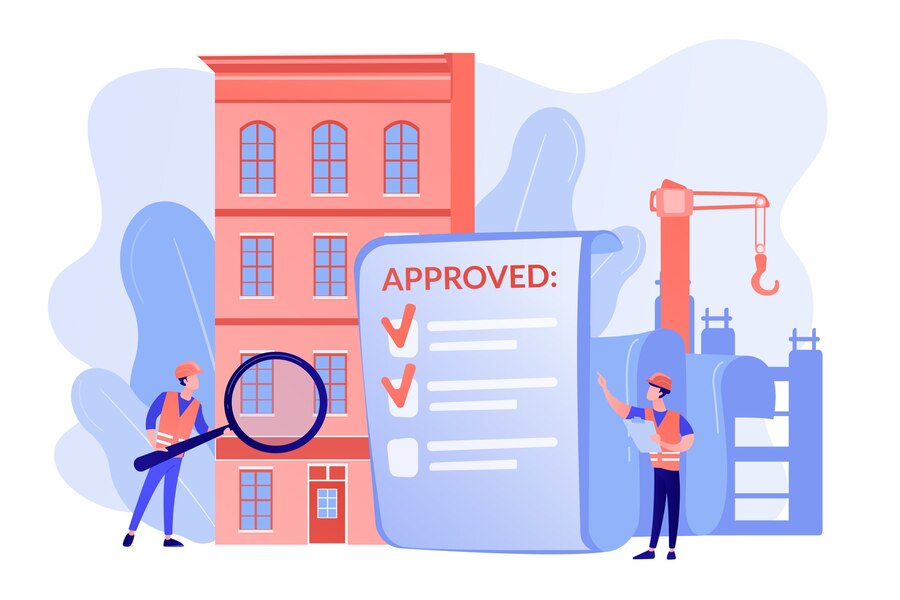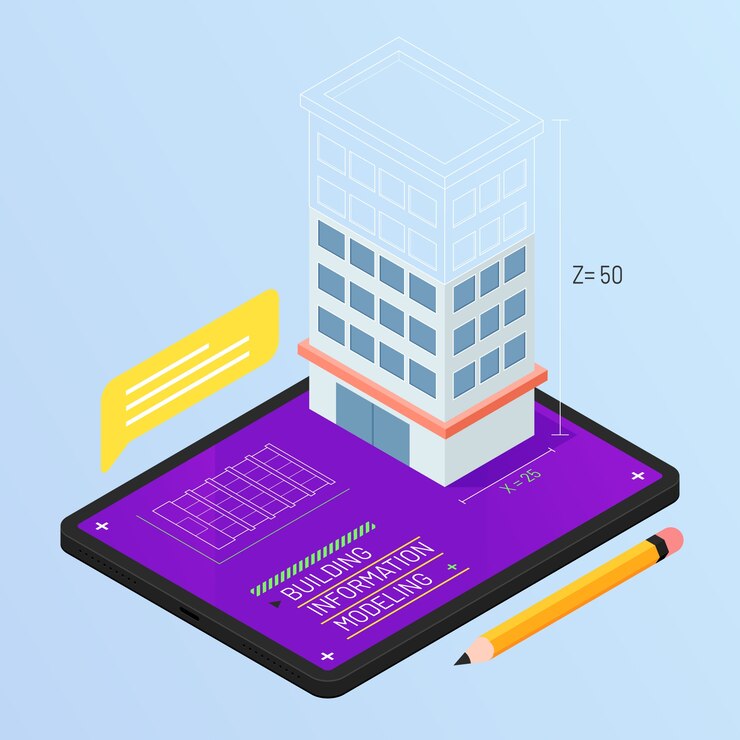Meaning of BU Permission and GST on Real Estate in India
- 20 Aug 24
- 20 mins

Meaning of BU Permission and GST on Real Estate in India
- Why is BU permission mandatory?
- Required Documents for BU Permission
- What is OBPAS?
- Benefits of Using OBPAS
- Impact on the Real Estate Sector
- What is House Building Advance (HBA)?
- Benefits of Availing House Building Advance
- What Are House Approval Plans?
- Importance of Compliance
- How to Use OBPAS
- Step-by-Step Guide to Using OBPAS
- Benefits of Using OBPAS for Non-Affordable Housing
- GST Implications on Property
- Definition of Affordable Housing Under GST
- GST on Commercial Properties
- Input Tax Credit (ITC) in Real Estate
- Impact of ITC Reversal on Real Estate Projects
- Conclusion
Key Takeaways
- Regulatory requirements like BU permissions is crucial for legal and safe property development.
- Utilizing systems like OBPAS can significantly streamline the building plan approval process, enhancing efficiency.
- Understanding GST implications, including input tax credit, is essential for financial planning in real estate projects.
- Proactive management of documentation and compliance can prevent potential financial setbacks due to GST reversals.
- House Building Advances support employees in achieving home ownership by offering favorable borrowing conditions.
A Building Utilization (BU) Permission Certificate is a crucial regulatory requirement for anyone looking to construct or modify a building. It ensures that the construction adheres to local zoning laws, safety standards, and environmental considerations. Obtaining BU permission is mandatory before commencing any construction or renovation project.
Why is BU permission mandatory?

Building Utilization Permission (BU) is an essential regulatory requirement for complete property development and construction services. It serves multiple critical functions within the realm of urban planning, safety, and environmental protection.
Here’s why obtaining BU permission is mandatory:
- Ensuring Compliance with Zoning Laws
Zoning laws determine what types of buildings and activities are permissible in specific areas. BU permission is required to ensure that the proposed construction aligns with these laws. This compliance helps maintain orderly development and prevents incompatible land uses that could negatively impact community living standards or UC property values.
- Safeguarding Public Safety
BU permission includes a review of building plans to ensure they meet established safety codes and standards. This process protects future occupants and the broader public by reducing the risk of structural failures, fire hazards, and other safety issues associated with inadequate construction practices.
- Promoting Sustainable Development
Environmental considerations are crucial in the issuance of BU permissions. These permissions often require environmental impact assessments to ensure that the construction will not adversely affect the local ecosystem. By mandating BU permission, authorities promote sustainable building practices and environmental stewardship.
- Facilitating Infrastructure Coordination
BU permissions are instrumental in coordinating necessary infrastructure support, such as water supply, sewage, and roads, with the planned construction. This coordination ensures that the infrastructure can adequately support the new development without overloading existing capacities.
- Protecting Historical and Cultural Sites
In areas with historical or cultural significance, BU permission helps protect these sites from potentially damaging construction activities. It ensures that new developments respect and preserve cultural heritage, which can be crucial for community identity and tourism.
- Legal and Financial Implications
Failure to obtain BU permission can result in significant legal and financial consequences, including fines, demolition orders, and potential criminal charges. The mandatory nature of BU permission acts as a deterrent against unauthorized construction and ensures adherence to legal frameworks.
- Supporting Property Value Protection
By enforcing construction standards and compliance through BU permission, authorities help protect property values. Well-planned and regulated developments tend to maintain higher property values and contribute to overall economic stability in the region.
- Enhancing Community Well-Being
Ultimately, the mandatory requirement of BU permission is about enhancing the quality of life for all community members. It ensures that developments are safe, environmentally sound, and well-integrated into the community, which promotes a better living environment for everyone.
Required Documents for BU Permission
Acquiring Building Utilization (BU) permission is a crucial step for any commercial property development. The process involves several key documents that must be prepared and submitted to obtain approval. Here’s a detailed list of the documents required to secure BU permission for commercial property:
- Title Deed or Proof of Property Ownership
The title deed or any legal document proving ownership of the property is fundamental. This document should clearly outline the owner's details and the property boundaries.
- Building Plan
A building plan documents drawn to scale is essential for BU permission. It should include detailed boundaries of the residential property, nearby roads, and orientation relative to major landmarks.
- Architectural Plans
Complete architectural plans, including floor plans, elevations, and sections, are required. A certified architect must certify that these adhere to local zoning and building codes.
- Structural Safety Certificate
A structural safety certificate from a certified engineer is necessary to ensure that the building design meets all safety norms related to seismic resistance, fire safety, and other hazards.
- Environmental Clearance
For commercial properties, especially those that may impact the environment significantly, an environmental clearance certificate is mandatory. This ensures that the project adheres to environmental standards and regulations.
- Fire Safety Approval
Fire safety approval from the local fire department, demonstrating that the building design incorporates necessary fire safety measures, is crucial for commercial buildings.
- No Objection Certificates (NOCs)
Multiple NOCs may be required from various departments, such as water, sewage, electricity, and other utilities, confirming that the services are adequate and available for the proposed construction.
- Land Use Permissions
Verification of land use as per the local master plan is required. This document confirms that the sale of land is designated for commercial use.
- Impact on Traffic Assessment
For larger commercial projects, an assessment of the impact on local traffic and plans to mitigate this impact may be required.
- Parking Layout Plan
A parking layout plan is essential for commercial properties to ensure adequate parking as per the size and usage of the building.
- Detailed Project Report
A detailed project report (DPR) that outlines the project's scope, execution timeline, budget, and other critical details is often necessary to provide a comprehensive overview of the project.
What is OBPAS?

The Online Building Plan Approval System (OBPAS) is a revolutionary digital platform designed to streamline the process of obtaining building approvals for various types of construction projects.
This system is integral to modernizing the building plan approval process, ensuring transparency, efficiency, and compliance with regulatory requirements.
Key Features of OBPAS
OBPAS offers several standout features that enhance the user experience and improve the efficiency of the building approval process:
- Digital Submission of Plans: OBPAS allows architects and developers to submit building plans and documents electronically, reducing the need for physical submissions, speeding up the review process, and providing benefits for developers.
- Real-Time Tracking: Applicants can track the status of their applications in real-time, providing clear visibility and updates throughout the approval process.
- Automated Compliance Checks: The system includes automated tools to verify that submissions meet all local building codes and zoning regulations, ensuring compliance and reducing errors.
Benefits of Using OBPAS
The benefits of using OBPAS are significant, making it a valuable tool for developers, architects, and government authorities alike.
- Increased Transparency: With all actions recorded and accessible online, OBPAS fosters a transparent environment where users can view detailed application statuses and document histories.
- Reduced Processing Times: By automating several steps of the approval process, OBPAS significantly cuts down on processing times, enabling quicker project starts.
- Enhanced Accessibility: Developers and architects can access the system from anywhere, making it easier to manage applications across multiple projects and locations.
Impact on the Real Estate Sector
OBPAS has a profound impact on the real estate industry by simplifying regulatory hurdles and reducing the administrative burden associated with building approvals.
- Streamlined Operations: The efficiency of OBPAS reduces the time and cost associated with obtaining building permissions, benefiting large-scale and individual developers.
- Support for Sustainable Development: By ensuring compliance with environmental and building standards, OBPAS supports the development of safer and more sustainable buildings.
- Economic Growth: Faster approvals mean quicker construction starts, contributing to economic growth and development within the real estate sector.
Registration & Login Process
The Online Building Plan Approval System (OBPAS) simplifies the process of obtaining building approvals by allowing users to register and manage their applications online. Here’s a detailed guide on the registration and login process on OBPAS, designed to assist users in navigating the system efficiently.
Step-by-Step Registration Process
Step1: Visit the Official OBPAS Portal
Start by accessing the official OBPAS website. Typically, the urban development department or local government authorities are in charge of this site.
Step 2: Create an Account
- Select the ‘Register’ option: Find and click on the ‘Register’ button, usually located at the top right corner of the homepage.
- Fill out the registration form. Enter all required information, such as your full name, email address, contact number, and a secure password.
- Verification: After submitting the form, you may need to verify your email address or mobile number through a verification link or OTP (one-time password) sent to your registered email or phone.
Step 3: Document Upload for Verification
- Upload Necessary Documents: Depending on your user type (architect, developer, homeowner), you may be required to upload professional certificates or identification documents to validate your registration.
Step 4: Account Activation
- Complete registration: You will receive an email notification stating that your account is active and ready to use once the system administrators have verified and approved it.
Login Process

Step 5: Accessing Your Account
- Navigate to the Login Page: Return to the OBPAS portal and click on the ‘Login’ button.
- Enter Login Credentials: Enter your registered email address and password.
- Secure Login: You may be asked for a second factor of authentication, such as a code sent to your phone, to ensure the security of your account.
Step 6: Resetting Your Password
Forgot Password Option: If you forget your password, use the ‘Forgot Password’ link to reset it. You will be required to provide your registered email address and follow the instructions sent to that email to create a new password.
Step 7: Navigating the Dashboard
Once logged in, you can access your dashboard, which is designed to be user-friendly.
- Submit New Applications: Easily submit new building plan applications.
- Track Existing Applications: Check the status of previously submitted applications.
- Manage Documentation: Upload or update necessary documents related to your applications.
What is House Building Advance (HBA)?
Governments or employers frequently offer House Building Advance (HBA), a supportive financial program, to help employees build or buy new homes. This advance is particularly beneficial for individuals looking to build their own home but may lack the upfront capital required for such a significant investment.
Key Features of House Building Advance
- Interest Rates: HBA usually offers a lower interest rate compared to commercial housing loans, making it an attractive option for eligible individuals.
- Repayment Period: The repayment period for an HBA is generally longer, offering borrowers more time to repay the advance comfortably.
- Eligibility: Eligibility for an HBA might be restricted to certain categories of employees, such as government employees, and is often based on years of service or salary grade.
- Purpose: The advance can be used for purchasing a new house, building one, or even for major renovations or expansions of existing properties.
Benefits of Availing House Building Advance
- Financial Assistance: Provides significant financial support for housing, which can be a major relief for employees.
- Reduced Financial Burden: The favorable terms, such as lower interest rates and longer repayment schedules, reduce the financial burden on the borrower.
- Encourages Home Ownership: By facilitating easier access to necessary funds, HBA encourages home ownership among employees.
House Approval Plans
House approval plans are essential documents in the construction property and real estate sectors, serving as blueprints for building new homes or renovating existing structures. These plans are meticulously drafted to comply with local zoning laws, building codes, and other regulatory requirements.
What Are House Approval Plans?
House approval plans are detailed drawings that describe the design, layout, and specifications of a residential project. These plans must be submitted to local government authorities or through systems like the Online Building Plan Approval System (OBPAS) for approval before construction can begin.
Key Components of House Approval Plans
- Site Plan: This includes a detailed map of the entire property, showing boundaries, existing structures, and where the new construction will occur.
- Floor Plans: These provide a bird's-eye view of each floor of the house, detailing room layouts, doors, windows, and stairs.
- Elevations: Side views of the house showing exterior finishes, roof slopes, and heights.
- Sections: Cross-sections that show the components of walls, floors, and roofs, giving details on materials and insulation.
Importance of Compliance
Compliance with local building codes and regulations is critical. These codes ensure that the construction is safe, sustainable, and suitable for living. Non-compliance can lead to legal issues, fines, or even demolition orders.
The Approval Process
- Submission of Plans
Homeowners or direct builders must submit the house approval plans to the local building authority or through OBPAS. This submission includes all required documents, such as title deeds, no-objection certificates from various departments, and detailed architectural plans.
- Review and Adjustments
Once submitted, the plans are reviewed by the authorities. If any adjustments are needed, the builder, after redevelopment, will be asked to amend the plans to meet all stipulations and resubmit.
- Receiving Approval
After all criteria are met, the house approval plans are approved, which grants permission to start construction. This approval is critical as it certifies that the plan adheres to all safety and regulatory requirements.
Benefits of Approved House Plans
- Legal Authorization: Provides the legal right to begin construction.
- Safety Assurance: Ensures that the building will be safe for occupants.
- Property Value: Approved plans often increase the property’s market value as they guarantee that the structure is built to code.
How to Use OBPAS
The Online Building Plan Approval System (OBPAS) is a crucial tool for streamlining the approval process of construction projects, including non-affordable housing projects. This guide details how developers and builders can effectively use OBPAS to manage their project submissions, ensuring compliance and accelerating project timelines.
OBPAS for Non-Affordable Housing
OBPAS simplifies the building plan approval process by providing a centralized digital platform where all necessary documents can be submitted and tracked. This is particularly beneficial for non-affordable housing options, which often face strict scrutiny and require detailed documentation.
Step-by-Step Guide to Using OBPAS
Step 1: Registration and Initial Setup
- Create an Account: Begin by registering on the OBPAS portal. Provide all required information, including business details and contact information.
- Verify Your Account: Complete the verification process by submitting the necessary documents, which may include business licenses and professional certifications.
Step 2: Project Submission
- Prepare Documentation: Gather all required documents for your non-affordable housing project. This typically includes detailed site plans, environmental impact assessments, architectural drawings, and any other relevant studies.
- Submit Plans Online: Log into OBPAS and navigate to the project submission section. Upload all documents and fill out the required forms with project details, such as location, project size, and estimated completion time.
Step 3: Managing Your Application
Tracking and Status Updates
- Monitor Application Status: Use OBPAS to check the status of your application in real-time. The system provides updates at each stage of the review process, from initial acceptance to final approval or requests for modification.
Step 4: Responding to Feedback
- Make Necessary Adjustments: If the reviewing authority requests changes or additional information, respond promptly through OBPAS by uploading revised plans or documents.
Benefits of Using OBPAS for Non-Affordable Housing
Efficiency and Transparency
- Faster Approvals: By automating several steps, OBPAS reduces the time it takes to get approvals, allowing construction to commence sooner.
- Transparent Processes: The system ensures that all interactions and submissions are logged, providing a transparent trail of communication and documentation.
Regulatory Compliance
- Ensure Compliance: OBPAS helps maintain compliance with local and national building construction regulations by providing structured submission processes and clear guidelines.
Support and Resources
- Access to Support: OBPAS often includes support features such as tutorials, FAQs, and direct lines to help desks, which can assist users in navigating the system and resolving any issues.
GST Implications on Property

The Goods and Services Tax (GST) has significant implications for the property sector, affecting both buyers and developers. Understanding these implications can help stakeholders navigate the complexities of property transactions and compliance with tax laws.
GST on Property Transactions
Property GST Rates
The GST regime categorizes properties into under-construction and ready-to-move-in categories, each subject to different rate of GST. Under-construction properties are generally subject to GST, while ready-to-move-in properties that have received a completion certificate are not.
- Under-Construction Properties: Typically attract a GST rate of Rs 5% without input tax credit (ITC).
- Ready-to-Move-In Properties: Exempt from GST if sold after the issuance of a completion certificate.
- Input Tax Credit (ITC) for Developers
Developers can avail of ITC on construction materials and input services, which can be passed on to buyers, reducing the overall cost of the property. However, this benefit comes with stringent conditions and compliance requirements to ensure that the savings are effectively passed on to end consumers.
Impact of GST on Affordable Housing
- Concessional GST Rates
Affordable housing projects enjoy concessional rates to promote access to housing unit for all. The current tax rate for affordable housing is 1%, subject to specific conditions regarding the size of the property and the income of the buyer.
Definition of Affordable Housing Under GST
- Area Criteria: Typically, a residential buildings.
- For central government employees in India, this assistance comes in the form of a House Building Advance (HBA) in a metropolitan city that must not exceed 60 square meters in carpet area and 90 square meters in non-metropolitan cities.
- Price Criteria: The cost of the unit should not exceed 45 lakh INR in both metropolitan and non-metropolitan areas.
GST on Commercial Properties
Commercial properties such as office spaces, shops, and industrial units are subject to a basic tax rate of 12% with input tax credit. This rate applies to both the purchase of new properties and leasing activities, impacting investment decisions in the commercial real estate sector.
Reverse Charge Mechanism (RCM)
Under the reverse charge method, buyers of properties where the seller is not registered under GST must themselves remit the GST due. This mechanism ensures that GST is collected on all taxable sales, including transactions involving unregistered dealers.
GST on Real Estate Services
GST also applies to various services related to Indian real estate, such as brokerage and property management services. These services attract a GST rate of 18%, adding to the overall transaction costs in the real estate market
GST Notices to Reverse Input Tax Credit
In the realm of real estate development, understanding the nuances of GST (Goods and Services Tax) is crucial, particularly regarding the input tax credit (ITC). The GST framework allows developers to claim ITC on their inputs, such as construction non-toxic materials and input services.
However, there are instances when the tax authority issues notices to reverse these credits. Here’s what developers need to know about such notices and how to handle them.
Input Tax Credit (ITC) in Real Estate
What is an input tax credit?
Input Tax Credit refers to the credit a business can claim for the GST paid on the purchase of goods and services used in the supply of its final product or service. In real estate, this includes eco-friendly materials like cement and steel and services like architectural and legal fees.
Eligibility for Claiming ITC
To be eligible for ITC, developers must ensure that the inputs are used for business purposes and are directly related to the supply of the final constructed property. The documentation proving the procurement and usage of these inputs must be meticulous and transparent.
GST Notices for Reversal of ITC
Reasons for ITC Reversal Notices
- Non-compliance with GST Regulations: If the tax authorities find discrepancies or non-compliance with GST rules, they may issue a notice for reversal.
- Mismatch in GST Returns: Discrepancies between the GST returns filed by the suppliers and the credits claimed can trigger an ITC reversal.
- Improper Documentation: Inadequate documentation or failure to retain invoices and other records can lead to the reversal of claimed credits.
Preventing ITC Reversal
- Regular Reconciliation: Regularly reconcile purchase records with the GST returns filed by suppliers to ensure all claims are accurate and accounted for.
- Compliance Check: Adhere strictly to GST regulations concerning ITC claims, including timely and accurate filing of returns.
- Proper Documentation: Maintain thorough records of all purchases and ensure that all suppliers are GST compliant.
Responding to ITC Reversal Notices
- Review and Assess the Notice
Upon receiving a notice, review it carefully to understand the basis of the claim by the tax authority. Assess all related documentation and GST filings to prepare a response.
- Gather Evidence
Collect all relevant invoices, contracts, and communications that support the legitimacy of the ITC claims. This evidence is crucial for disputing any erroneous reversal notice.
- Legal Recourse
If the reversal notice is based on incorrect assumptions or errors, developers have the right to appeal the decision. Legal advice should be sought to ensure the drafting of appeal is structured correctly and submitted within the stipulated deadlines.
Impact of ITC Reversal on Real Estate Projects
- Financial Implications
Reversal of ITC can lead to significant financial strain on developers as it increases the project cost, which may not always be passable to buyers, affecting profitability.
- Project Delays
Financial setbacks due to ITC reversal notices can lead to delays in project completion, affecting delivery timelines and potentially tarnishing the developer’s reputation.
Conclusion
The complexities of Building Use (BU) permissions, understanding the functionalities of OBPAS, and managing GST implications are essential for developers and property owners in the real estate sector. Adopting a thorough and informed approach to compliance, documentation, and system utilization can streamline processes, ensure legal adherence, and enhance operational efficiency.
By staying proactive and informed, stakeholders can effectively manage their ongoing projects, avoid potential pitfalls, and capitalize on opportunities in the evolving real estate landscape.
💡Facing delays in GST payment? Get started with PICE today and streamline your GST payments. Click here to sign up and take the first step towards hassle-free GST management.




















